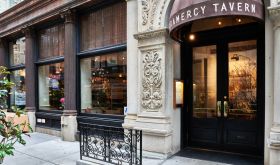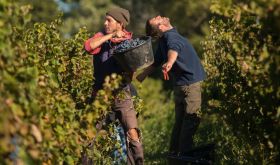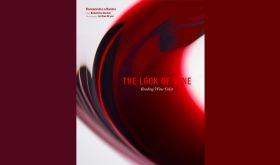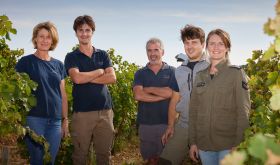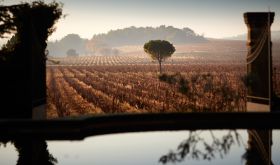Walking 100 yards alongside restaurateur Andrew Tarlow, 42, on Broadway in Williamsburg, Brooklyn, between his café, Marlow & Sons, his Diner and his butcher's, Marlow & Daughters, we bumped into his young female butcher carrying a tray of warm, sweet Italian sausages and his baker going home at the end of his nine-hour shift. Was there, I wondered, a candlestick maker involved, too?
In fact, Tarlow and his obviously talented wife, Kate Huling, have not yet turned their attention to candles but over the past 15 years they have built up a diverse and successful business.
This includes two other restaurants, Roman's in Fort Green and Reynard in the newly opened Wythe Hotel; an as yet unnamed, soon to open, bar; a clothing and leather business under the Breton label; and a lively food magazine, Diner Journal, that cleverly captures the romantic attachment many young Americans now feel towards what they eat.
My rendezvous with Tarlow was at the end of my third trip across the Brooklyn Bridge in five days, a journey once undertaken specifically for eating at the venerable Peter Luger Steak House.
Today, however, Williamsburg resonates to the same food beat that surrounds several parts of east London. Standing in line for takeaway food at the weekend Smorgasburg food market (which is now suspended until the spring) I felt as though I were back in Borough Market or around Maltby Street, with the Hudson river ahead of me rather than the Thames.
Suitably fortified, we set off round a few blocks that took us to the Radegast Hall & Biergarten that would not look out of place in Munich; the chocolate heaven established by Rick and Michael Mast; and the latest outpost of the Bluebottle Coffee Company that originated in Oakville, California.
What each of these has in common with Reynard at the most basic architectural level is wonderful 19th-century brick work which has now been exposed to create a relaxed and memorable atmosphere for the staff to look after their customers.
Reynard occupies the ground floor of a former cooperage to which Marlow has brought his restaurant expertise to match those of developer Jed Walentas and hotelier Peter Lawrence. (The sixth-floor bar offers wonderful views of Manhattan.)
Walking in hungry and thirsty at 9 pm we were both captivated. The design has exposed the tall windows, wooden floors and ceilings and numerous other original features; the kitchen incorporates an open oven and grill (far more prevalent in Brooklyn, which tends to be chillier than Manhattan); and the small, red logo of a fox (reynard in French) looks most distinguished on the waiting staff. Their practice of decanting every wine they serve adds a further touch of elegance.
In such a setting, a salad of red kale, apple, breadcrumbs and capers; goose breast with sauerkraut; a ginger pudding; and a sorbet made from the local Mast chocolate, were all excellent. The kitchen passed the acid test of offering what I craved at that time of night, an omelette stuffed with cheese and spinach, with flying colours. With a bottle of cool Beaujolais our bill was $140 for two.
The following day I sat opposite the equally cool Tarlow at the designer-distressed Marlow & Sons. Relaxed and laid back he may appear, but I quickly began to appreciate that behind this exterior is a restaurateur with that essential eye for detail.
This emerged initially when he gently admonished our waitress for failing to explain one of that day's main courses. Then, as he noticed my attention wandering to a small, red light box behind the bar that kept flashing on and off, he explained, 'That flashes on when there is food ready in the basement kitchen so the waiters know to run downstairs and collect it.'
Tarlow learnt of such unobtrusive but essential facts of restaurant life working his way up from the bottom, as a busboy to barman in Manhattan, 20 years ago, and today he makes a practice of 'working the door' at every new restaurant for at least the first couple of months.
In that era, Williamsburg was not safe, but once former Mayor Giuliani had cleaned up the Lower East Side, Tarlow appreciated that while this suburb remained quiet and desolate it was no longer dangerous. He used the money he was earning to pay the builders to transform a run-down corner site into his Diner, a property that was available then for a mere $90,000 freehold. But even Tarlow's considerable charm was not sufficient to persuade his father to take this risk.
And while Tarlow joins the ranks of numerous other restaurateurs who have ameliorated so many city centres around the world, it is his emerging role in fashion that particularly distinguishes him.
As his restaurants expanded, Tarlow decided to explore the 'farm to table' connection more fully, a route that led to the establishment of his butcher's shop. As they began to handle whole carcasses of lamb and beef, there emerged the challenge of what to do with the skins and the wool. Their range of clothes, leather bags, sweaters and gloves has been the result, leaving Marlow to ponder that perhaps their next step may be 'to look for our own cotton fields'. That's a long way from bussing dirty dishes.
Marlow & Sons 81 Broadway, Williamsburg; tel +1 718 384 1441 www.marlowandsons.com
Reynard 80 Wythe Avenue, Williamsburg; tel +1 718 460 8004 www.reynardsnyc.com






